| Umělec 2005/3 >> Little Warsaw 2002-2004: Displaced Monuments and Deconstructive Strategie | Просмотр всех номеров | ||||||||||||
|
|||||||||||||
Little Warsaw 2002-2004: Displaced Monuments and Deconstructive StrategieUmělec 2005/301.03.2005 Maja a Reuben Fowkes | profile | en cs de es |
|||||||||||||
|
On the occasion of their presentation in Galerija Balen, Slavonski Brod, in January 2005, the Hungarian group Little Warsaw presented a summary of projects carried out in the last two years. Several recurring preoccupations and common strategies in their practice emerged in the course of the talk. Points of reference included the properties of public space, the tension between monuments and collective identities, and the recontextualization of the reception of art works. Their principle strategy came over as centered on the notion of ‘removal,’ both of objects and established readings attached to them.
Their seminal work Flag (2002) appears in retrospect to have contained the blueprint for many of Little Warsaw’s future interests and activities. Its effectiveness depended on the transposition of the flag from the streets to the interior of a gallery. It was recognizably the black flag that adorns the fronts of public buildings as a sign of mourning, now removed to the context of the white cube. This familiar element of public imagery was placed in the contemporary art setting as the single object in an exhibition, representing a shift from the generic into the unique. What is more, this flag was not made of cloth but instead cast in bronze, so instead of being light, waving, temporary and ephemeral, it becomes heavy, immobile, permanent, and timeless. The installation of the work was public, and in doing so Little Warsaw deconstructed the path of an art object from the artist’s studio to the exhibition display. Visitors could watch as the artists tried out a number of possible solutions for installing the 300 kg sculpture. The uncertainties surrounding the realization of the exhibition were not hidden. By showing a process rather than a finished act, Little Warsaw highlight the multitude of presentational and interpretative possibilities around the art work. Undoubtedly, flags, whether communist, fascist, national or international, stand as signifiers for one ideology or another. Does Little Warsaw’s black flag of mourning call for death to all flags, all ideologies? Is it a celebration of the absence of ideology? What does it stand for? Does it comment on the art world or wider social processes? The Monument to the Last Biennale (2003) was realized shortly before Little Warsaw were chosen to represent Hungary at the biennale of biennales – the Venice Biennale. In a further paradox, it was installed as a public sculpture independently from and at the same time as the artists’ appearance in Venice. The sculpture is made of a stone plinth taken from a gravestone carvers’ workshop, on top of which is the absent globe surrounded by chains. Although it’s called ‘monument,’ it’s not designed for a specific space but rather related to time. Interestingly, the time reference of the ‘last biennale’ is purely relative, and points to a constant deferral of meaning. Nevertheless, an imposed reading of this work is that of the art world in chains. So, with The Monument to the Last Biennale Little Warsaw set a trap for themselves and launched their sculpture into the endless chain of signifiers. Little Warsaw’s best known project is the Body of Nefertiti (2003), one of the remarkable aspects of which was that the work itself only really existed for a couple of hours in front of a handful of eye witnesses, who were the only ones to truly experience it. At the same time, the work was the subject of the Hungarian Pavilion in Venice in 2003. Ironically, visitors to the ‘main event’ in Venice were only able to see secondary and partial representations of the work, in which the famous ancient bust was temporarily united with a contemporary body modeled by the artists. Little Warsaw engineered the removal of the Nefertiti bust from the pedestal of Western museology, where it stood as a relic, to be united with the proposed body; the dramatic meeting took place a meter from the sacred space of the exhibition case in the Egyptian Museum in Berlin. The unified sculpture pacified numerous antagonisms of the two parts, where classical and contemporary, priceless and pricey, certain and unknowable, sublime and ordinary, powerfully combine. The bust is carved marble and the body is cast bronze, avoiding any pretension to stylistic unity, calling for the response and input of the viewer in considering the myriad issues raised by the idea of Nefertiti’s body. The situation recalls Jacques Derrida’s remark according to which ‘both the viewer and the art work are in the mode of contingency.’ The success of the project Body of Nefertiti is in unlocking a sealed artifact. It disturbed the established and conventional identity of the object, freeing the bust for contemporary rereadings. Nefertiti has regained her own personal history, escaped from her sacred shrine, with the unexpected emergence of a new event in her existence. It is also important to point out that, characteristically, Little Warsaw’s action was only a temporary retextualisation of an art object, and involved no permanent changes to the physical object, only to its network of traces. Again, to recall the element of removal: the body traveled from Budapest to Berlin and the Nefertiti bust was removed from its pedestal to meet the body. The body itself traveled on to Venice, where it was exhibited, but gained its meaning only in relation to the absent head. As Derrida asserts: ‘No element can function as a sign without relating to another element which itself is simply not present.’ The most recent concern of Little Warsaw is with the rescue from obscurity of monuments that have over time become invisible and lost their initial signification, achieved by placing them in new contexts and investing them with new meanings. For Deserted Monument (2004), Little Warsaw removed an obsolete commemorative plaque from Budapest to the streets of The Hague, exploring through their public sculpture the problems of invisibility and nostalgia that are attached to forgotten monuments. The choice of object was of particular significance, as the plaque in question was hidden in the fabric of a building on a street corner, passing completely unnoticed for half a century. It had been completely defaced and its original meaning extinguished as a result of the ideological changes of the 1940s. By cutting the plaque out of its architectural frame, a space was created that was endowed with new signification. By virtue of its absence, the monument became visible again, and the space created began to function as a site for posters and ad hoc street displays. Although the relief on the plaque was ‘carefully’ destroyed, so the contours of a face were preserved, it was no longer dedicated to anyone personally. As the identifying marks were removed, the link to a specific historical site was lost. The plaque was emptied of ideological power and forgotten. According to Little Warsaw this plaque became in a way ‘a monument to all monuments.’ It is important to stress that the removal was temporary, their was no destruction or permanent defacement, subtraction from or addition to the plaque. The action of Little Warsaw is neither part of the history of violence against this particular monument, nor monuments in general, but rather draws attention to this problem. Taken from its architectural shell, it appears as a gravestone, and acquires connotations of the death of ideology, of memory, and the ‘death of the artist.’ Especially relevant here is the concept of the ‘death of the artist,’ as the plaque was installed together with a wooden bench, the work of the artist Pavel Althamer. This art work as well as functional object, in combination with the plaque, released a further multitude of contingent meanings and complicated the authorship of the installation or situation as a whole. The Deserted Monument, through the notions of visible/ invisible, presence/ absence, site specific/ general, architectural element/ independent object, memory/ forgetfulness, offers a plenitude of interpretative keys for an engaged reader. Another temporary removal took place as part of the Monument contra Cathedral project (2004). Here Little Warsaw borrowed a bronze statue of a Hungarian worker hero from 1965 that stands on the main square of Hódmezovásárhely for an installation in the Stedelijk Museum in Amsterdam. The monument on its original site was in practice invisible and unnoticed, while the issues raised by the existence of this kind of public sculpture have been largely ignored in artistic and public discourse. By temporarily removing it, the artists created a lack and provoked desire for the missing object. Not for the first time, the actions of Little Warsaw were the subject of debate in the media and professional circles, and as a result the forgotten sculpture was revitalised. In its new installment in the Stedelijk Museum, the sculpture was available to a completely new audience, becoming ‘doubly visible.’ It was originally intended to be placed together with a maquette of the Cathedral of Christ the Savior in Moscow, which functions as a symbol of a crime against culture. The cathedral, one of the jewels of nineteenth century Moscow religious architecture, was destroyed by Stalin to make room for the Palace of the Soviets, which was never built, and its foundations later went on to become a swimming pool. In the 1990s, as a further violence against history, the church was rebuilt as if nothing ever happened, attempting to wipe clean the slate of a communal past. This seemingly unrelated juxtaposition would have opened up the work to new readings and associations, including the issue of the denial of the past and violence against monuments, as well as have defused some of the hostility that the removal of the statue aroused in Hungary. András Galik and Balint Havas are among the most internationally relevant contemporary Hungarian artists, thanks to their persistent exploration of the tension that remains in the relationship between monuments and the collective identities. Their strategy of reusing real monuments by intervening in their public reception is both aesthetically effective and thought provoking. Just to recapitulate, after the Monument contra Cathedral, the Deserted Monument, and Monument to the Last Biennale, let us return to Flag. Who is this flag for? What is it mourning? Why is it so heavy?
01.03.2005
Рекомендуемые статьи
|
|||||||||||||
|
04.02.2020 10:17
Letošní 50. ročník Art Basel přilákal celkem 93 000 návštěvníků a sběratelů z 80 zemí světa. 290 prémiových galerií představilo umělecká díla od počátku 20. století až po současnost. Hlavní sektor přehlídky, tradičně v prvním patře výstavního prostoru, představil 232 předních galerií z celého světa nabízející umění nejvyšší kvality. Veletrh ukázal vzestupný trend prodeje prostřednictvím galerií jak soukromým sbírkám, tak i institucím. Kromě hlavního veletrhu stály za návštěvu i ty přidružené: Volta, Liste a Photo Basel, k tomu doprovodné programy a výstavy v místních institucích, které kvalitou daleko přesahují hranice města tj. Kunsthalle Basel, Kunstmuseum, Tinguely muzeum nebo Fondation Beyeler.
|








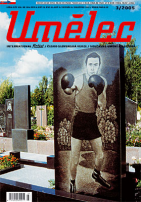























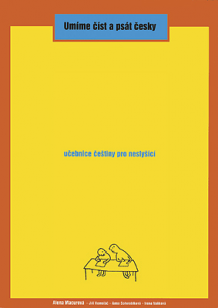




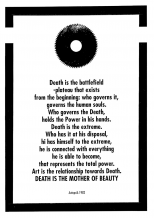
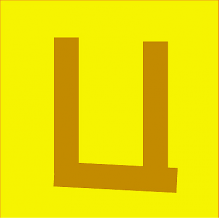
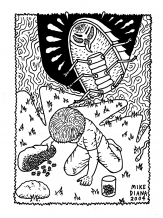
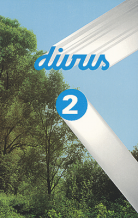


 We Are Rising National Gallery For You! Go to Kyjov by Krásná Lípa no.37.
We Are Rising National Gallery For You! Go to Kyjov by Krásná Lípa no.37.
Комментарии
Статья не была прокомментированаДобавить новый комментарий